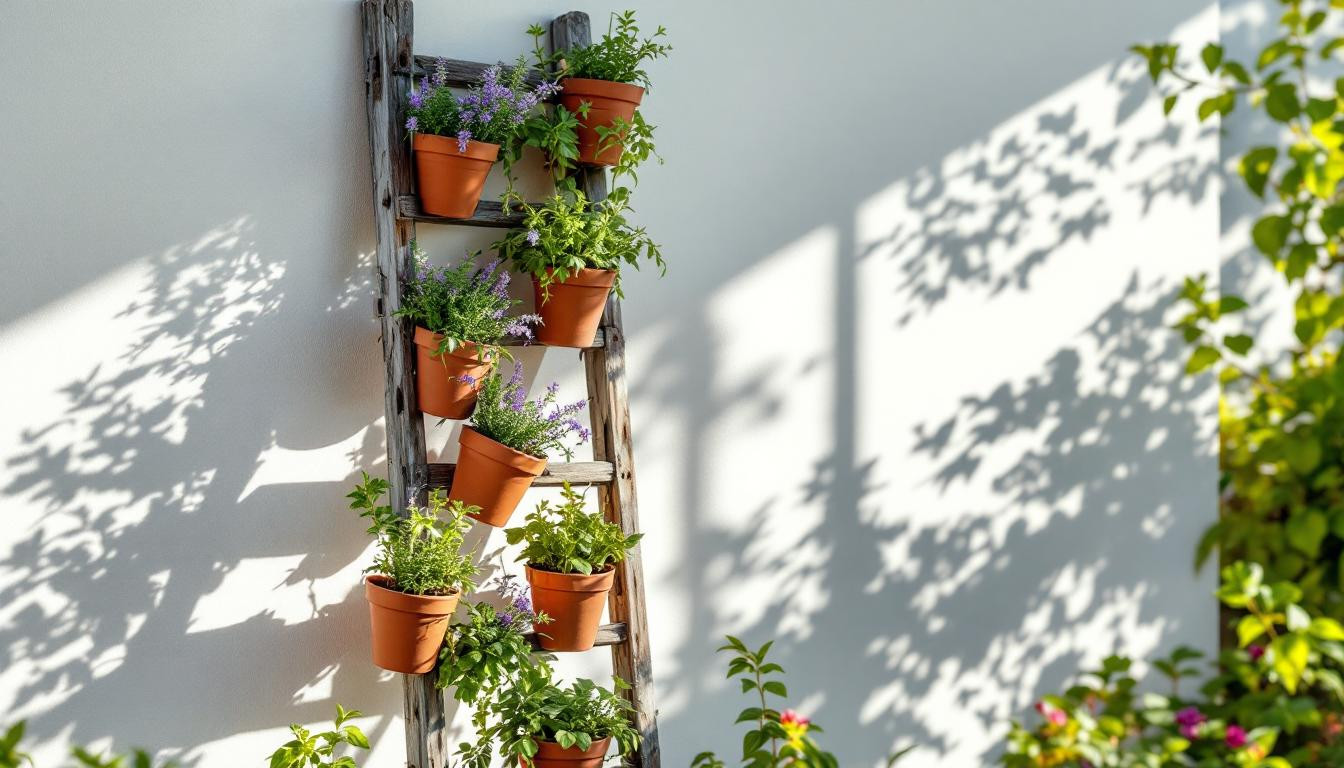Let’s uncover the secrets of transforming a forgotten ladder into a thriving vertical garden! This innovative DIY project not only maximizes your growing space but also brings fresh herbs within arm’s reach. As we increasingly seek sustainable living solutions, upcycling old items into functional garden spaces has become a perfect blend of eco-consciousness and practical homesteading.
Why vertical herb gardens are revolutionizing small space living
In our modern world where urban living often means limited outdoor space, vertical gardening offers a smart solution for herb enthusiasts. “Vertical gardens allow you to grow an impressive variety of herbs in a fraction of the space traditional gardens require,” explains Dr. James Bennett, urban horticulture specialist at Green City Institute. This approach is particularly valuable for apartment dwellers or those with minimal yard space who still crave the joy of growing their own culinary herbs.
Finding the perfect ladder for your herbal transformation
Not all ladders are created equal when it comes to vertical gardening. Wooden ladders provide rustic charm and are easier to customize, while metal varieties offer durability against the elements. Look for a ladder with adequate rung spacing to accommodate your planters—typically 12-16 inches works best for most herb varieties. Thrift stores and garage sales often yield perfect candidates for under $20, making this a budget-friendly project.
Essential materials for your vertical herb garden
- An old wooden or metal ladder
- Planters that fit between rungs (terra cotta pots, metal buckets, etc.)
- Quality potting soil formulated for herbs
- Your favorite herb seedlings or seeds
The weekend transformation: A step-by-step approach
Creating your ladder herb garden is surprisingly simple. Begin by thoroughly cleaning your ladder, then consider applying a weather-resistant finish if it’s wooden. Next, secure your planters on the rungs, ensuring they won’t shift. Add drainage material like pebbles at the bottom of each container before filling with quality potting soil. This creates a healthy environment where herbs can thrive without waterlogged roots—much like how our bodies need proper circulation to function optimally.
“The beauty of ladder gardens lies in their flexibility. You can rotate the entire structure to follow the sun or bring it inside during harsh weather, protecting your herbal investment,” notes Maria Sanchez, author of “Vertical Gardening for Modern Homes.”
Selecting herbs that thrive in vertical settings
Some herbs perform particularly well in vertical gardens. Consider creating a functional arrangement that includes pest-repelling varieties alongside your culinary favorites. Position sun-loving herbs like rosemary and thyme on upper rungs to maximize light exposure, while shade-tolerant varieties like mint and parsley can occupy lower levels.
The wellness benefits of ladder herb gardens
- Daily access to fresh, organic herbs for cooking and teas
- Therapeutic gardening experience in minimal space
- Improved air quality in your outdoor living area
- Visual appeal that enhances mental wellbeing
Creative styling options for your vertical oasis
Your ladder herb garden can become a stunning focal point with thoughtful styling. Consider incorporating nostalgic design elements that are making a comeback in home décor. Paint your ladder in a complementary color to your outdoor space, or keep it natural for a rustic aesthetic. Add decorative plant markers, solar-powered fairy lights, or even integrate a watering system for convenience.
Maintaining your ladder herb garden
Like our bodies need consistent care, your vertical herb garden requires regular maintenance. Water appropriately for each herb type—some like basil prefer consistent moisture while rosemary thrives with less frequent watering. Harvest frequently to encourage bushier growth, and fertilize monthly with a diluted organic fertilizer. This garden structure can be particularly appealing to those seeking simpler, more mindful activities away from technology.
The environmental impact of your upcycled creation
By repurposing an old ladder, you’re participating in a meaningful sustainability practice that reduces landfill waste. Your vertical garden also supports local pollinators and creates a micro-ecosystem right in your backyard. It’s a living example of how simple solutions often have the most profound impact, much like how small lifestyle changes can dramatically improve personal wellness.
Have you considered how transforming everyday objects can revolutionize your approach to gardening and wellness? Your ladder herb garden isn’t just a clever way to grow plants—it’s a daily reminder that sometimes the most beautiful transformations come from items others have discarded, not unlike how redemption stories often make for the most compelling narratives in both real life and entertainment.
